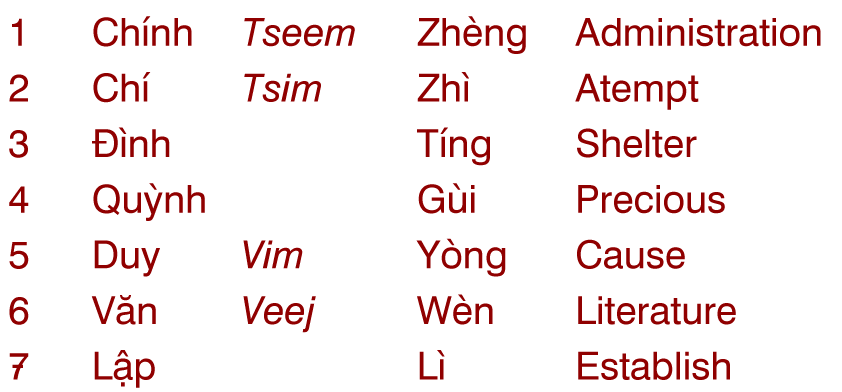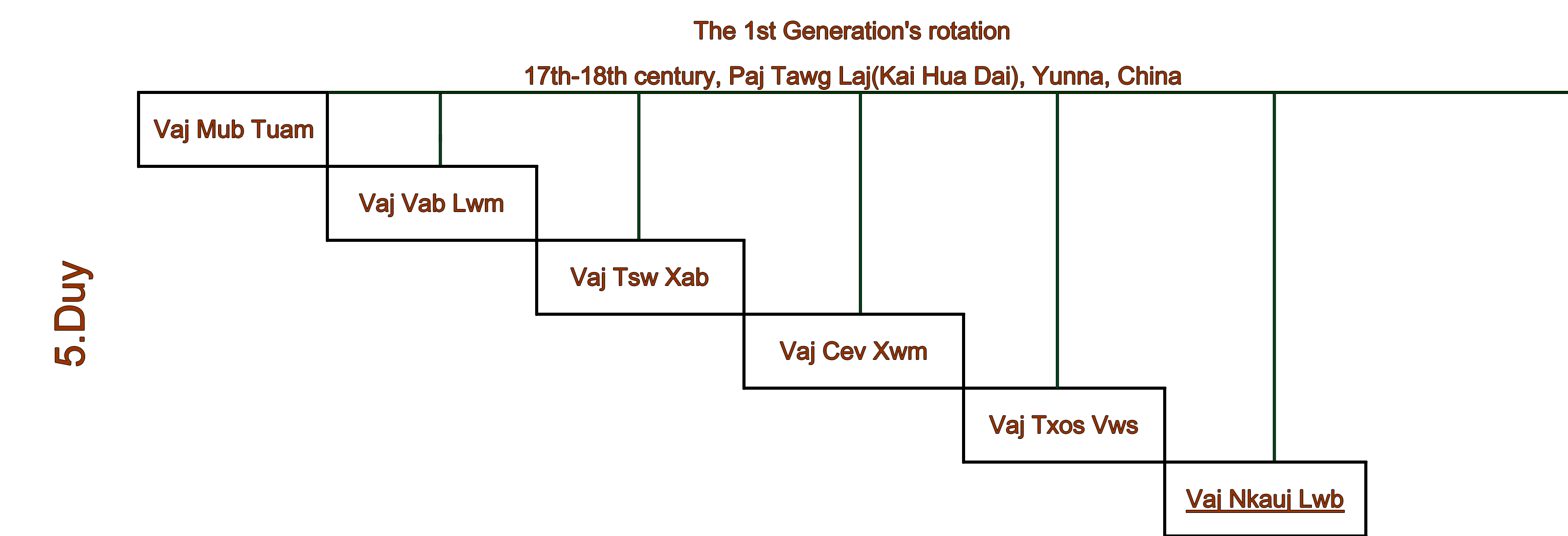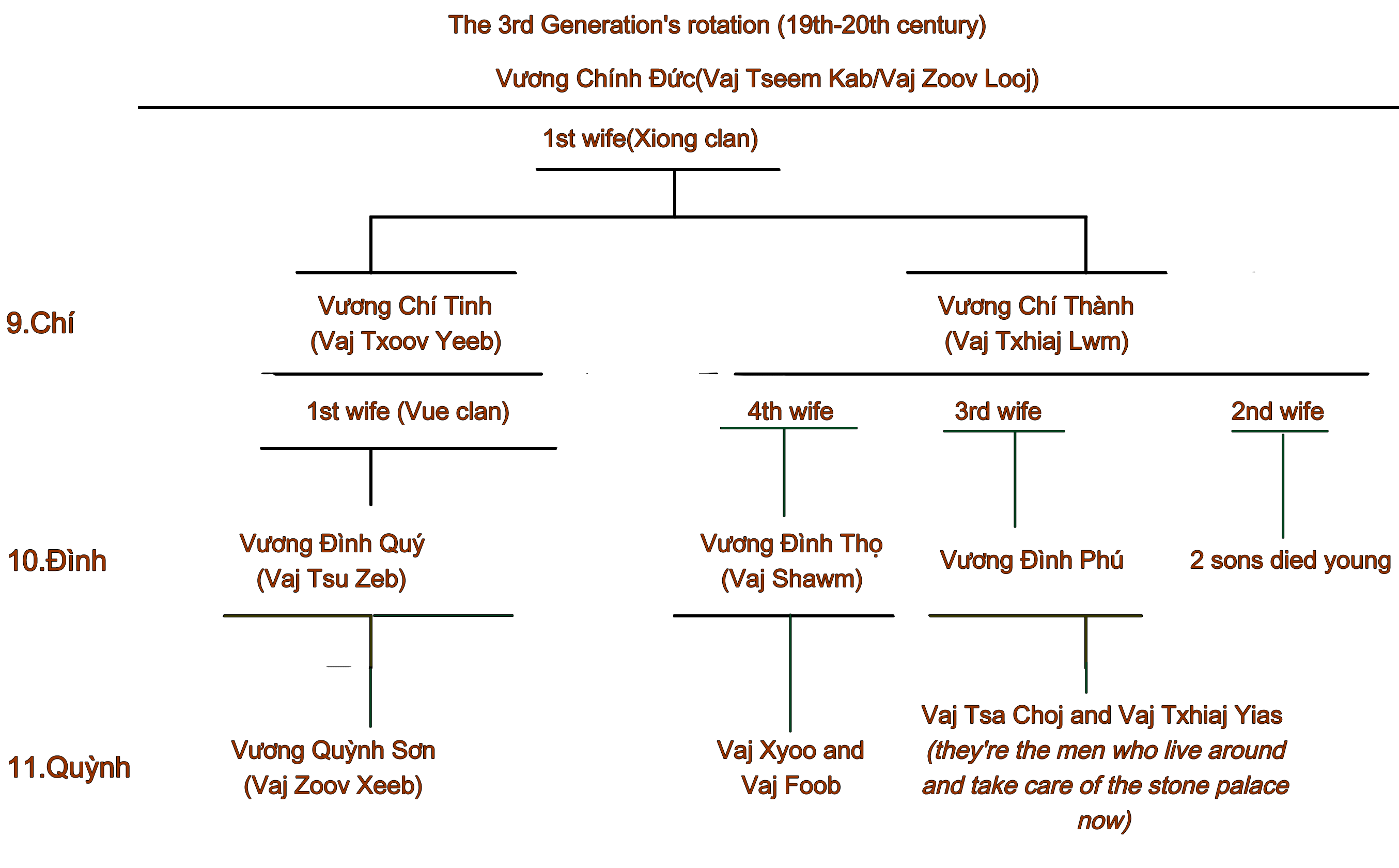Vương Chính Đức(Vaj Zoov Looj)'s parents, and later on, his children and grandchildren, use Hmong, Chinese (both Mandarin and Cantonese), French, and Vietnamese to communicate with each other. The clan middle names were made in a way that fit the languages that they speak and luckily Hmong, Chinese, and Vietnamese are somewhat similar, too. The following translation was dictated by Vương Quỳnh Sơn(Vaj Zoov Xeeb)'s comprehension(he speaks Hmong, Chinese (Mandarin&Cantonese), Vietnamese, and French).
The following names are those individuals from the main branch and of the first wife only. Vương Quỳnh Sơn (Vaj Zoov Xeeb) has one wife. Until 2005, we have approximately 1,000 members who are Vương Chính Đức(Vaj Zoov Looj)'s descendants. The other who are not named here, are those who want privacy or simply, just too many to count (By the time I'm done with one, another one will be born already).
Back in China, at the end of the 17th century, Vương Chính Đức (Vaj Zoov Looj)'s ancestors already had these middle names to distinguish who's from which generation. Hmong people based on a clan system to marry and set up orders, so these middle names help to address each other as "father/uncle" or "son/nephew" and not to marry the backward way or when they don't live in the same region they still know which generation they belong too.
Vaj Txiaj Ntawv, Vương Chính Đức(Vaj Zoov Looj)'s father, as an educated man, kept records of his clan's name and history, along with his other family members who traveled to the border of China and Vietnam, they built their own kingdom on this very place. Vaj Txhiaj Ntawv's tomb is now still in the Bear Cave, Sa Phin district.




